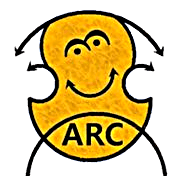Hand Position Principles

Hand-Position principles refer to left hand techniques.
The goal is to prepare your fingers to perform with great dexterity.

Fingers approach the string with a curved arc–shape and your fingertips make contact with the string.
Hand Position Rhymes
Rhymes make concepts easier to remember. Each rhyme serves as a hand-position principle check-point. Training your hand to approach the neck of the instrument properly, allows your fingers to perform in the most successful and efficient manner.
Please memorize these Rhymes:




SPACE at the BASE means that there should be a feather-width (small degree) of space between your finger’s base segment and the instrument’s neck, when performing.

The base segment of each finger should be parallel to the strings whenever physically possible. Pretend there is a small degree of space.
Space at the Base gives your hand and fingers the ability to possess a loose and supported range of motion. Spring-like left hand and finger mechanics are improved with space at the base.

D Major Home Instrument Tapes Finger Mechanics Finger Numbering Finger Dexterity Finger Position
Finger Intensity Hand Position Principles Hand Position Rhymes Space at the Base Swell the Well Swing the Wing
Hand Position Set-Up Violin Notes on D Viola Notes on D Cello Notes on D Bass Notes on D Violin Notes on A
Viola Notes on A Cello Notes on A Meet Guide Bass Notes on G D Major Training Exercises The Lower-Tetrachord
The Major Second The Major Third The Perfect Fourth The Upper-Tetrachord The Perfect Fifth The Major Sixth
The Major Seventh The Perfect Octave The Complete D Major Scale Left Thumb Logic Left Thumb Flexible Location
Knuckle Leverage D Major Etudes Arpeggio Patterns D Major Mastery Checkpoint Extending the Instrument’s Range
Finger Location Terms Violin Notes on G Viola Notes on G Cello Notes on G Bass Notes on E Bass Notes on A
Viola Notes on C Cello Notes on C Violin Notes on E Third Position Principles Violin Third Position on E
Third Position Measurement Differences D Major Harmony Interval Categories Orchestra Harmony in D Major
Preparing for Orchestra Pieces Divisi Protocol Orchestra Chord Textures Ensemble Engine Technique Building
Practice Coins Violin Technique Builder Viola Technique Builder Cello Technique Builder Bass Technique Builder
Dynamic March Theme and Variations Bowing Dynamics Dynamic March Performance Details Linked Bowing Exercise
Off-Beats Exercise Neighbor Notes Complete Dynamic March Composition Score and Parts
Finger Intensity Hand Position Principles Hand Position Rhymes Space at the Base Swell the Well Swing the Wing
Hand Position Set-Up Violin Notes on D Viola Notes on D Cello Notes on D Bass Notes on D Violin Notes on A
Viola Notes on A Cello Notes on A Meet Guide Bass Notes on G D Major Training Exercises The Lower-Tetrachord
The Major Second The Major Third The Perfect Fourth The Upper-Tetrachord The Perfect Fifth The Major Sixth
The Major Seventh The Perfect Octave The Complete D Major Scale Left Thumb Logic Left Thumb Flexible Location
Knuckle Leverage D Major Etudes Arpeggio Patterns D Major Mastery Checkpoint Extending the Instrument’s Range
Finger Location Terms Violin Notes on G Viola Notes on G Cello Notes on G Bass Notes on E Bass Notes on A
Viola Notes on C Cello Notes on C Violin Notes on E Third Position Principles Violin Third Position on E
Third Position Measurement Differences D Major Harmony Interval Categories Orchestra Harmony in D Major
Preparing for Orchestra Pieces Divisi Protocol Orchestra Chord Textures Ensemble Engine Technique Building
Practice Coins Violin Technique Builder Viola Technique Builder Cello Technique Builder Bass Technique Builder
Dynamic March Theme and Variations Bowing Dynamics Dynamic March Performance Details Linked Bowing Exercise
Off-Beats Exercise Neighbor Notes Complete Dynamic March Composition Score and Parts
SPACE at the BASE
SWELL the WELL
SWING the WING




